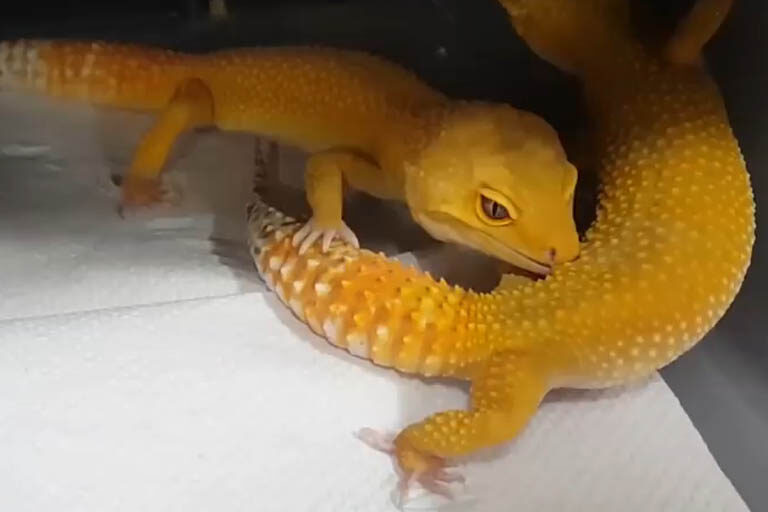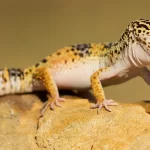Leopard geckos are naturally found in South Asia ranging from Nepal and India, through the desert parts of Pakistan up to parts of Afghanistan, Iraq and Iran.
Introduction to the natural distribution of Leopard geckos
Distribution information, also referred to as geographic range, is the area where a species is found naturally. This article describes the natural distribution of Leopard geckos (E. macularius). Leopard geckos are distributed over countries that are situated in Southcentral Asia.
Although not considered desert animals per se, Leopard geckos inhabit the arid and semi-arid territories of Afghanistan(30)(32)(34)(49)(50)(59)(66), Pakistan(30)(34)(49)(50)(60)(63)(66), Iraq(59), Iran(49)(50)(59) and India(30)(32)(34)(49)(50)(59)(63)(66). Recent reports (2019) shows that Leopard geckos were also distributed through parts of Nepal(66).
One article also reports Leopard geckos to be native to Vietnam(32), but no further confirmational information was found to substantiate this. In the article Field Herping In Iran, the interviewee Karsten Griesshammer reported having found a Leopard gecko in one of Iran’s smaller villages.
World map showing the natural distribution of Leopard geckos. The geographic range of Leopard geckos is reported to be from the northwestern parts of Nepal and India, spanning Pakistan and the southern parts of Afghanistan, Iran and parts of Iraq. World map vector from freepic.com
Natural distribution (geographic range)
Eublepharis has an apparently relict distribution in southwest Asia, India, and the Riu-Kiu Islands(64). Today, their populations seemed to have dwindled and are distributed over a smaller area. By looking at various literature sources, one can get more specific areas within the countries mentioned above where Leopard geckos are distributed.
India
In India, Leopard geckos are reported to be from the northwestern parts which include the Rajputana and Khandesh districts/states(49)(59). Rajputana is mainly covered by the Thar desert – Asia’s only subtropical desert. India borders Pakistan in the north.
The Thar desert is not only comprised of sand dunes and large flat surfaces. Here some vegetation in the form of Acacia trees and scrubs can also be seen. Image Daniel Villafruela (CC BY-SA 3.0)
Pakistan
Part of the Thar desert also occupies the Sindh area of Pakistan. In this country, Leopard geckos have been recorded from Azad Kashmir, North Western Frontier Province, Punjab, Balochistan, and Sindh(49). Occurrence in West Pakistan is apparently general(64).
Balochistan, situated on the western side of Pakistan, is covered with the Kharan desert and Punjab with the Thal and Cholistan deserts. Pakistan borders India in the south, Afghanistan in the northwest and Iran in the west.
To find wild Leopard geckos in Afghanistan, one more likely needs to visit the southeastern parts which border Pakistan(49). Wikipedia reports that the Afghan Leopard gecko (a subspecies of E. macularius) is native to the areas of Afghanistan that run along the Kabul River and its tributaries. Afghanistan borders Iran in the west. Henkel reported that Leopard geckos are distributed throughout Afghanistan(59).
Iran
In Iran, Leopard geckos have also been reported in parts bordering Pakistan(49). Iran borders Afghanistan in the east, Iraq in the west and Pakistan in the southeastern parts. In his interview with Gecko Time, Karsten Griesshammer reported having found one Leopard gecko after driving towards the border of Iraq. Henkel reported that Leopard geckos are distributed throughout Iran(59).
Iraq
Henkel reported that Leopard geckos are distributed throughout Iraq(59). Iraq borders Iran in the east of the country.
Nepal
Leopard geckos have been recently discovered in parts of Nepal(66). Although only a limited amount of specimens has been discovered in the southern parts of the country, the possibility exists that Leopard geckos are distributed all over the country.
The habitat of the Common Leopard gecko (E. macularius) found in Nepal includes forest areas(66)(67).
The forest of Nepal is currently been destroyed by deforestation(67).
Habitat
When looking at the traditional deserts with their sparse rainfall one might immediately think sand dunes and long stretches of flat sandy planes. Leopard geckos are often described to be from arid and semi-arid areas — generally referring to too little or not enough rain to sustain vegetation. Although this is the case with the majority of desert surfaces, there are some areas (called niches) that contain vegetation, rocks, trees grass and even rivers.
Photograph of a section of the Kharan desert taken by Najamuddin Shahwani showing an area with shrubs, trees and other vegetation. Image CC BY 3.0
In his Gecko Time interview, Karsten said that the Leopard gecko they found was in an area with hard-packed clay. They also found some Zagros-newts/ Neurergs kaiseri nearby, meaning that “the region will not regularly dry out completely”.
In Nepal, it is reported that Leopard geckos were found in more densely vegetated areas. Although these areas are considered hardwood forests, they still represent the driest mountain ecosystems in Nepal(66)(67).
Leopard geckos from Pakistan are also described as showing an affinity for humid places(49).
Summary
Leopard geckos are naturally distributed in, mainly the desert areas of, Afghanistan, Pakistan, Northeast India, Iraq and Iran. Although these areas are mainly covered with harsh deserts, Leopard geckos prefer niches where there are vegetation, water and rocks.







